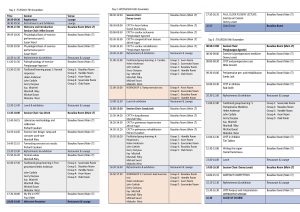Richardson K; Levett DZH; Jack S; Grocott MPW
British Journal Of Anaesthesia [Br J Anaesth] 2017 Dec 01; Vol. 119 (suppl_1), pp. i34-i43.
There is a consistent relationship between physical activity, physical fitness, and health across almost all clinical contexts, including the perioperative setting. Physiological measurements obtained during physical exercise may be used to infer the risk of adverse outcome after major surgery. In particular, data obtained from perioperative cardiopulmonary exercise testing have an expanding role in perioperative care. Such information may be used to inform a variety of changes in clinical practice, including interventions that may reduce the risk of perioperative adverse events. Specifically, for patients undergoing major cancer surgery there is a complex interplay between different cancer treatments, including neoadjuvant therapies (chemo- and chemo- plus radiotherapy), surgery, and physical fitness, and the modulation of these relationships by perioperative exercise interventions. Preoperative cardiopulmonary exercise testing provides an objective evaluation of physical fitness and has been used to provide an individualized risk profile in order to guide collaborative decision-making, inform the consent process, characterize and optimize co-morbidities, and to triage patients to perioperative care. Furthermore, studies evaluating exercise interventions aimed at increasing preoperative exercise capacity have established that training improves physical fitness. However, to date, this literature is largely composed of feasibility and pilot studies with small sample sizes, which are in general underpowered to assess clinical outcomes. Adequately powered prospective multicentre studies are needed to characterize the most effective means of improving patient fitness before surgery and to evaluate the impact of such improvements on surgical and disease-specific (e.g. cancer) outcomes.


